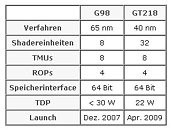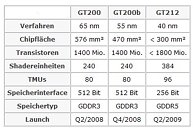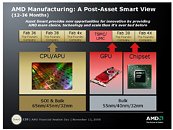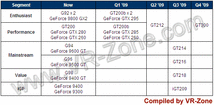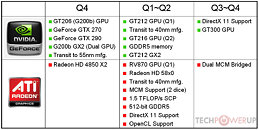
NVIDIA Likely to Start 40nm GPU Conquest with GT218
As the industry moves closer to implementation of the 40nm silicon technology on graphics processors, some of the most complex electronic devices, both AMD and NVIDIA have their offerings in the works. While AMD already has prototypes taped out, NVIDIA seems to be taking its time, perhaps to perfect its products.
The green camp, as Hardware-Infos finds out, is likely to start its 40nm lineup with the GT218 graphics processor. With NVIDIA's internal coding scheme, the GT218 is an entry-level GPU. In its generation hierarchy, would be the GT215, GT216 (mainstream) and GT212 (high-end). The GT218 will succeed the G98 GPU that went into making the GeForce 9300 series. It will have 32 stream processors, 8 texture memory units, and 4 raster operations pipelines. It will continue to have a 64-bit wide memory bus. Despite the increase in transistor counts, the GPU ends up with a lower TDP, expected to be around 22W, as against the roughly 30W for the G98. The GT218 is slated for April, later this year.
The green camp, as Hardware-Infos finds out, is likely to start its 40nm lineup with the GT218 graphics processor. With NVIDIA's internal coding scheme, the GT218 is an entry-level GPU. In its generation hierarchy, would be the GT215, GT216 (mainstream) and GT212 (high-end). The GT218 will succeed the G98 GPU that went into making the GeForce 9300 series. It will have 32 stream processors, 8 texture memory units, and 4 raster operations pipelines. It will continue to have a 64-bit wide memory bus. Despite the increase in transistor counts, the GPU ends up with a lower TDP, expected to be around 22W, as against the roughly 30W for the G98. The GT218 is slated for April, later this year.
